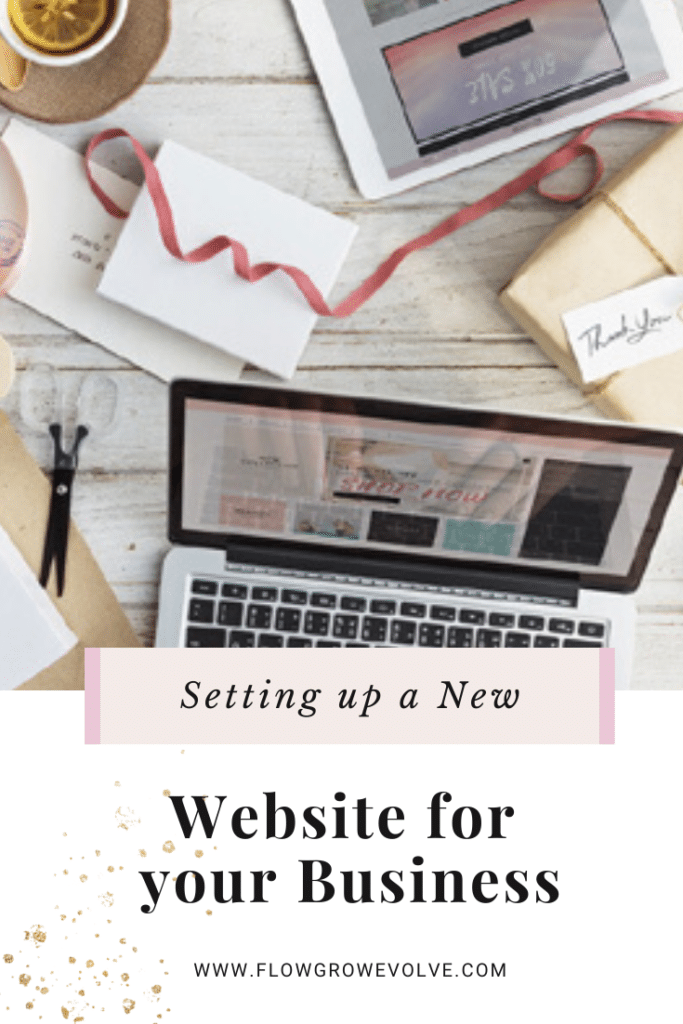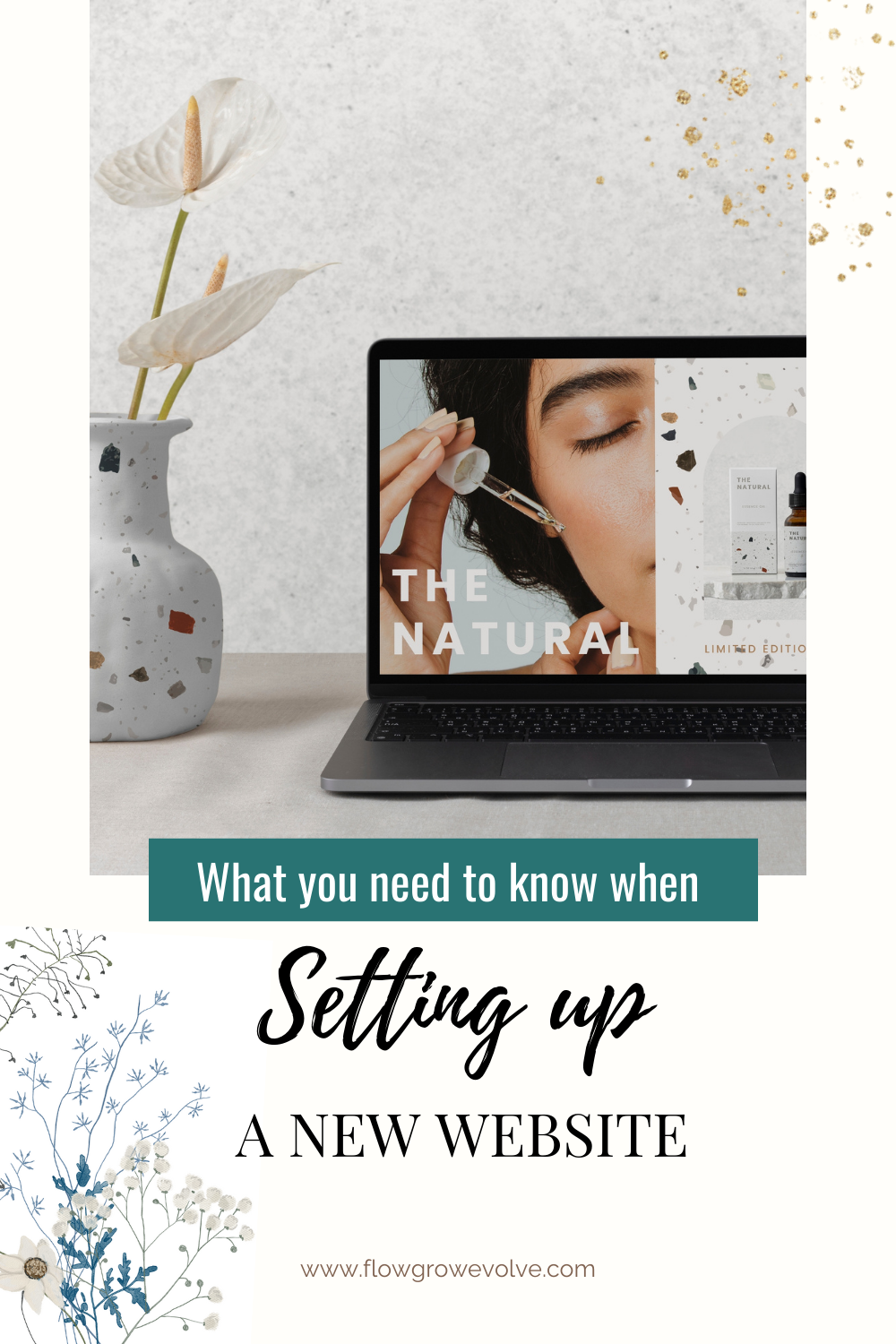Setting up your own website is at the top of a ‘to-do’ list for a fledgling company. It takes some serious thinking, time, and energy and there are a lot of decisions to be made before you start.
Often what looks nice, easy, and super cheap will cost you more in the long run. It’ll cost you in time, money and frustration when it doesn’t work or look as you had planned.
In this post, I want to simplify it for you and help you set up a website that is manageable and works in the quickest and most pain-free way possible for the long term.
Like any tool, when utilised correctly a website can be one of your biggest marketing assets, when it’s not done right it can be a royal pain in the nether regions. So first question:
Do you even need your own website?
YES! YES! and YES!
I’d like to end it there, but I hear some of you wondering if a Facebook/ LinkedIn social media page will do…
While they will suffice if you have a ton of clients and enough business coming to you already. I do for instance have a hairdresser nearby, that is so popular they don’t need a site – this scenario though is a rare one.
The issue with having a page elsewhere is that it is not your own. The big players such as Facebook, and Google own the content that is listed there, and if they decide to censor or start charging, or driving traffic elsewhere with ever-changing algorithms, they can and will.
Your content, followers, and engagement with your customers which has taken you a serious amount of time to build, really isn’t your own if it is hosted on someone else’s platform.
If you are seriously running your own business and would like to leave a professional first impression, having your own website is one of the most important first steps in that process.
It is still good to promote yourself on other platforms, always linking back to your website. That way if you have issues with your Facebook page, if gets hacked, or goes down, you won’t lose anything you have created.
The first step in setting up your site is deciding on a name:
What’s in a Domain name
A domain name (www.domainname.com) will be with you for a long time, so it’s important to get it right. If the name of your business is your own, and it is easy to spell, it would be best to use that. If it is long and confusing though, you can create a simpler version:
For example, Stacey’s Graphic and Brand Design Studio might become www.StaceysDesigns.com
One issue is that many of the good domain names are taken, still, where possible keep it as short, simple to spell out and as easy to remember as possible. Check what is available here.
Once you’ve decided on a name you’ll need a place to register that domain and host your website.
Where to Host your website
Another important decision is choosing the right hosting provider that suits you and your business needs. Many providers will sign you up with a lot of promises at incredible prices but after the initial contract period, the prices shoot up and you’ll be paying a lot more than you anticipated.
Also, keep in mind that you get what you pay for when you go with a cheaper provider. You can find great companies at a good price if you shop around.
A few key requirements to look out for:
- Good reviews – really read them and don’t just look at the stars. There are also a lot of unbiased comparisons out there, it’s good to know the pros and cons of each supplier.
- High uptime of 99%, which is the norm.
- Global, if you are based outside of the USA, your site will run faster if you have a server in your region rather than on another continent.
- Secure, this is a given, but worth making sure that it’s a reputable company.
- Support via chat, email or phone. There will almost always be issues along the way, so it helps if you can chat with someone at any time to resolve them.
- Easy setup and upgrade. Most providers come with a one-click WordPress, design and set-up support. As your company grows, and you may increase the number of domains, or traffic it is good to have the option to easily expand.
After much consideration and number crunching, I have recently moved my websites over to Bluehost*. They are well recognised, trusted, and service orientated, while their prices do go up after the initial offer, they stay at a steadier rate than many of their competitors. After doing the calculations they were the cheaper option if looking at the cost over a 3-year period.
A big bonus is that I can host all my websites together, which is both easier to manage and more cost-effective for me.
For those that want the very best hosting that web designers and agencies use, then I would recommend Siteground. A2 Hosting is a cheaper option and offers a lot of extras, but again after the initial period be aware that the price does increase.
Should you outsource your website design?
This is such a personal choice, it really depends on if you are at all tech-savvy or not, and on whether you have the budget. A simple site shouldn’t cost too much.
NOTE: Beware upfront that if you do choose to use a company, make sure that you trust them and that they have a good portfolio, support and reviews.
Unless you are one of the lucky few that has a bottomless budget, do ask them to either set it up in WordPress or similar, so that you can add your own blog posts and make small updates yourself. Many designers and agencies are happy at the end of the project to give you a mini training on how the platform works.
While the cost of building a website is not that high, I’ve met many disillusioned business owners that have to pay every time they need to make a simple change. This is often charged at an hourly rate and depending on the service levels or size of your web designers’ company, an even bigger challenge might be getting them to prioritise making these small changes in a timely manner. Do ask your chosen designer what these costs are upfront, so you can budget for them.
Make sure you also always get all the login details, as well as the working files at the end of a project. It’s always best that you also keep a copy, just in case of any issues, if they go out of business or if you choose to stop working with them it’ll be easier to hand it over to another designer or manage it yourself.
Another option is managing the design of your site yourself, in which case I would highly recommend WordPress.
![]()
Why WordPress is the recommended option
With the increase of people and smaller businesses getting websites, it’s easier than ever to have your own website. While there are some great plug-and-play options such as Squarespace, Shopify or BigCartel. My preferred and recommended option is WordPress.
The perks of WordPress are that it is open-source software, which means it is always being improved. Once you get the hang of it, it is easy to use and update.
There is also an endless choice of design themes, both paid and free. Should you need any additional functionality there are a large number of plugins available.
A plugin is simply an add-on that gives you some additional functionality, such as SEO (search engine optimisation), Analytics, Opt-in pages, contact forms, SSL, etc. Many are free, and some you may need to pay for if you want to use the more advanced features.
The biggest bonus is also that most hosting companies offer a one-click set-up, which means you can have it up and running within seconds with little to no technical knowledge.
If you are just starting out, using WordPress will keep the costs down, while giving you a lot of creative freedom and functionality.
Choosing the Right Design Theme in WordPress
There are a lot of free themes to choose from, there are a few websites that list the latest top themes. You can also scroll endlessly down the selection that is available on WordPress.org.
A few of the recommendable key features to look out for:
- Responsive: This simply means that the design adjusts itself to suit all display sizes including mobile/ tablet.
- SEO Optimised: Make sure your website is easily trawled by Search Engines.
- Customisable features such as font and colours so you can personalise the design.
Many of the templates are free, or you can use a free demo to start with, and if want the extra functionality of changing the fonts, design or colours you pay for the premium version. Although there are also a lot of great themes that give you a suitable style at no cost.
It’s easy to get a preview of each theme, and you can easily update or change the theme at any time. On top of this, there are also a lot of designers creating and designing templates that they sell online. Two of the best marketplaces to find them are over at Themeforest and CreativeMarket.
Now that you have the basics what’s next?
Covering everything in one blog post would make this a very long blog post…
 I cover the best plugins for your website, and best practices to optimise your website before launch here.
I cover the best plugins for your website, and best practices to optimise your website before launch here.
For now, the most important aspect is to choose a domain name, and hosting partner and set up the basics. Choose a template that suits your brand and your own style.
At times it might feel like there is a lot to do, like at the start of any new venture there always is. Yet, once you’ve set it up these fundamental aspects you can continue to build upon them as you and your business grow.
Like life, it’s an ever-evolving process – best taken one step at a time. I hope for you that it’s the first sign of many great things to come. Any questions – feel free to drop me a line, happy to help.
Resources:
WP Beginner is a great place for anyone starting out with WordPress and can answer almost all questions you may have in more detail.
WP Guide for Beginners, from Shoutmeloud, is an incredibly helpful guide also.
Beautiful photos by Arnel Hasanovic on Unsplash & rawpixel.com

*Please note that these are affiliate links, which pay a small commission – yet these are also products that I support and use myself, and would not recommend them otherwise.
